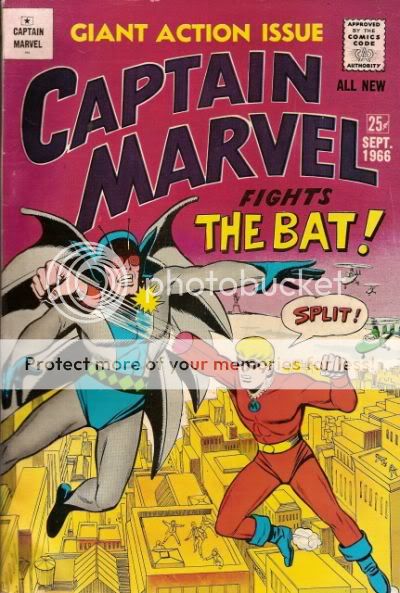In August 1971, as a child of 11 years in Memphis, Tennessee (United States of America), I picked out and bought my first comic book. It wasn't the first comic book I had read, nor was it the first comic book I had been given, but it was the first comic book that I made the choice to buy with my own precious pieces of change. What followed was nearly four decades of routinely buying comic books, on an increasingly frequent, eventually weekly basis (because in America, throughout those decades, a newly-published set of comic books would (generally) be released for sale once per week).
Although I'm no longer regularly buying comic books, I still participate in the wonderful online community,
the Classic Comics Forum at www.comicbookresources.com (or CBR, as we regulars like to abbreviate it). There, many knowledgeable, courteous, helpful, and intelligent fans participate in ongoing discussions about comic books of the past. I've made some terrific online friends there, and I encourage fans of old comics to join in the forum; it's very friendly to new members.
A few months ago (as of this inaugural posting), a thread was started:
"Forty Years Ago This Month", in which we looked back at the comics on the stands four decades back. Since that was just a few months before I started buying comics, I didn't have much to add (although many of the comics from that month I have since read or obtained). But the thread got me thinking, as I often have, about the early days of my comics buying.
It baffles my wife, but I share with many longtime comics collectors the ability to remember most of the thousands of comic books that I've bought. I should clarify: I don't have total recall of the contents of every issue, nor if you asked me something like "Did you buy Captain America #243?", I won't always be able to tell you, blindly, whether I did. There are plenty of exceptions: if you ask "Did you buy Swamp Thing #12?", I can answer "yes" easily, because I know that I bought
every issue of Swamp Thing. And there are some issue numbers that are easily recalled because of special significance: yes, I know without checking that I
do own Captain America #200, because I remember co-creator Jack Kirby had returned around that time, and that he had definitely written and drawn the 200th issue in the 200th year of America's existence, and that I had bought all of Jack Kirby's issues when he returned to the title in 1976. But what I
can almost always do (and again, this is no particularly special ability among long-time collectors) is remember whether or not I bought a comic book with just a glance at its cover. (For example, I just glanced at the cover of the aforementioned Captain America #243, and it turns out that no, I didn't buy that one).
The thread I mentioned above, "Forty Years Ago This Month", alerted me to the existence of a terrific online resource that I had somehow missed:
The Newsstand. The Newsstand is an extension of
Mike's Amazing World of DC Comics (no relation), a website that I've enjoyed for many years now, but I was unaware that he had added this section, which allows a user to look at most of the comics that were on sale in the USA in a given month (he doesn't have every one of the many comic book companies' titles, but for those early years in which I began my collection, he has all the publishers that
I would have selected from). With the aid of the newsstand, I am able to travel back in time, looking at what I had to choose from, and recreate, as nearly as possible, the specific chain of purchases as I went from sampling a few comics now and then, to buying every issue of favorites, to sampling lots and lots of different titles, as my comics habit grew bigger and bigger.
And that's what I'm going to share with the world here. I'll be looking at each comic, in roughly the order that I bought them. Sometimes, of course, I'd buy several comic books on one day, and sometimes, I'd buy comics that had already been on sale for two or three months or more; when I can remember specifically buying a comic book that had already been out for a while, I'll try to factor that in to my ordering (that's another fairly common trait of collectors that baffles my wife: the ability to remember when and where we bought some specific comic books).
I don't plan to reread each comic book before I post about it here, although sometimes I may (and yes, most likely I do still have it in my rather large collection--I haven't lost, traded or disposed of many of my comics). Rather, I plan to look back at what inspired me to pick out particular comics from the many that were available, and to focus on what I remember about them rather than do detailed reviews. What was really hooking me, what was a disappointment, what was I excited to discover, what artists I really loved...there's lots to reminisce about and ponder over, and I hope readers will find something to enjoy as I recreate those trips to the spinner rack, beginning back in August, 1971.


